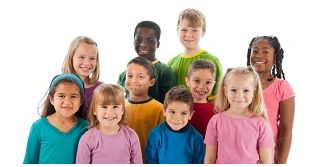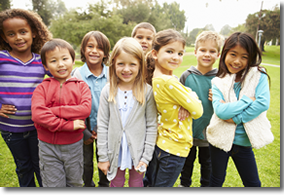How do we know which friends and adults are safe?
By Sharon Womack Doty, J.D., M.H.R.
Consultant to the VIRTUS® Programs
Consultant to the VIRTUS® Programs
 Young people are among the most giving, trusting people in the world. They expect us to be loving and caring, and they trust us to live up to their expectations. It is this openness and trust that draws us to children—those of us with good intentions and those among us who would exploit this trust to fulfill their own needs.
Young people are among the most giving, trusting people in the world. They expect us to be loving and caring, and they trust us to live up to their expectations. It is this openness and trust that draws us to children—those of us with good intentions and those among us who would exploit this trust to fulfill their own needs.Most people in a child’s life are safe and they deserve the respect and trust of both the parents and the child. However, some people cannot be trusted to protect children or to act only in the child’s best interest. These are unsafe people, and they do not deserve our respect or trust.
The challenge is to identify which adults are safe. There are two primary criteria for assessing which adults are safe friends and safe adults who can be trusted with your children. Safe adults are:
- People who won’t hurt the child without a good reason (e.g., a good reason would be a nurse giving a child a shot to cure an illness or prevent a disease).
- People who won’t intentionally confuse or scare the child without a good reason (e.g., a good reason that might intentionally scare a child would be yelling “Fire” in case of a fire, and helping a child escape from a burning building).
- People who are sure to respect the child’s wishes and the wishes and the rules of the child’s parents, guardians, and caretakers when it comes to personal safety—including touching safety.
Working through the list of people in a child’s life (using the above criteria) provides a wealth of opportunities for parents and children to discover how to assess different individuals and to uniformly apply the criteria to everyone. For very young children, parents need to do the work to evaluate those who come into contact with the child based on these criteria.
By the age of five or six, parents can start including the child in this process. A good place to begin is by listing all the adults who come into regular contact with your child.
The benefits of this activity begin with the list. For example, while creating the list, parents might learn about new adults who interact with the child or adults who make the child feel uncomfortable. Parents may also find out about new friends, and generally learn more about what is going on the child’s life outside of the home.
Once the list is finished, parents and children should talk about each person in the context of appropriate relationship boundaries. When discussing whether friends and adults are safe or unsafe, keep in mind that safe people sometimes behave in an unsafe way. For example, suppose a person who meets the criteria for a safe person offers to let a child do something that parents have said “no” to—just this once. That is an unsafe act, yet it may seem harmless. But, working on this task, together with your child, can teach each of you not only which adults and friends are safe, but what it is about that person that makes them safe or unsafe in a variety of circumstances.
Another valuable side benefit of doing this work with your children is that you and your child can start to look at people and behaviors from the perspective of safety rather than how the behavior “feels” or whether the child likes it. Some safe people do cause pain or scare children. A nurse who administers a shot or a friend pulls a child out of the way of an oncoming car are examples of people who are safe, but cause pain or scare a child unintentionally. By talking this through with children, you can help them begin to understand that “feeling good” is not the test of whether someone is safe.
Parents and children should also create a plan for doing this work periodically to include new adults and friends who have come into the child’s life, or to deal with adults who were safe but are now unsafe, as well as those who were previously acting in an unsafe manner, but who now have changed their ways and may now be safe. Remember, however, that a child molester can never again be trusted to be alone with a child. A child molester may “appear” to have changed his or her ways, or may “claim” to have changed his or her ways, but you should never, under any circumstances, allow that person to be alone with a child.
The important thing for everyone to remember is that children should play it safe with adults and friends in their life. This means that children must be reminded that they are not to go anywhere or do anything with anyone until parents or guardians say it is okay. This long-held response to strangers is wisely applied to all adults.
Keep teaching touching safety to your children—their future well-being is at stake!
This article is not part of your continuing training. To access your required bulletins you must log in using the form in the upper left-hand corner of the screen. Then go to the TRAINING tab.



